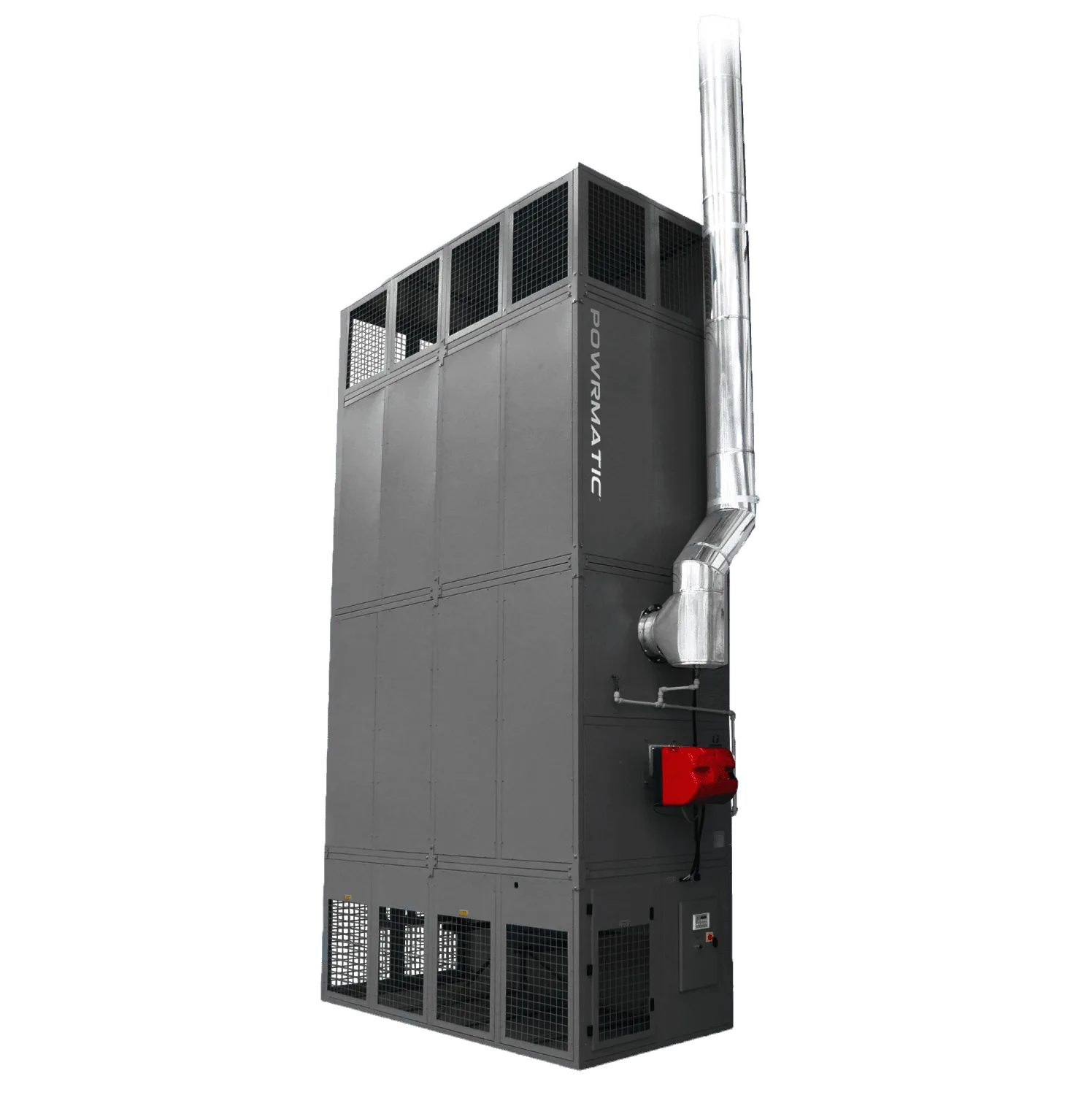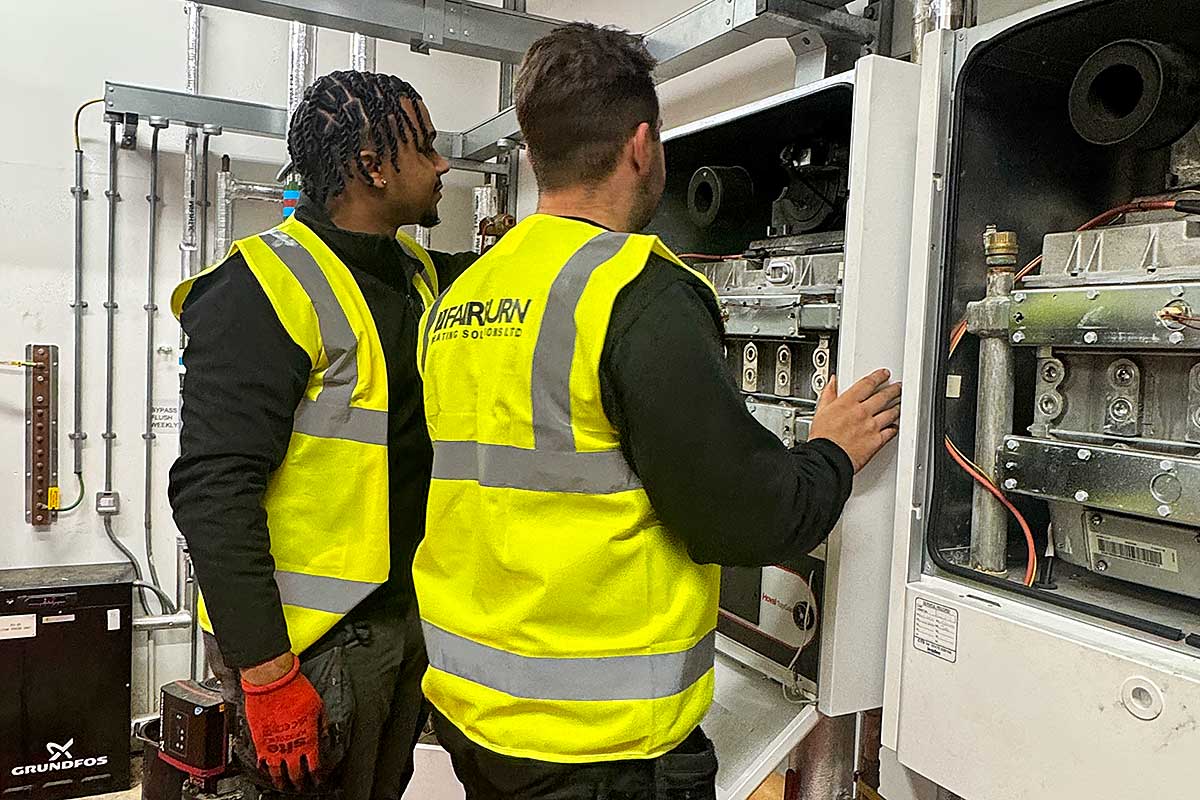Heating systems in warehouses play a critical role in maintaining optimal working conditions, preserving inventory, and ensuring the safety of both products and personnel. The choice of warehouse heating systems depends on various factors such as the size of the space, the nature of goods stored, energy efficiency, cost-effectiveness, and environmental impact.
Warehouses come in various sizes and shapes, from small storage facilities to vast distribution centres. Choosing the best commercial heaters for warehouses requires careful consideration to ensure uniform warmth across the area.

Warehouse Heating options:
One common heating method for warehouses is forced-air heating. This system involves using a furnace or heat exchanger to generate warm air, which is then distributed through ductwork and vents strategically placed throughout the warehouse. It’s effective in larger spaces as it can cover a wide area and maintain consistent temperatures. However, it might not be the most energy-efficient option due to potential heat loss in the ductwork.
Another prevalent system for heating a warehouse is radiant heating. This method involves installing heating elements, typically radiant tubes or panels, on the ceiling or walls. These elements emit infrared radiation, heating objects and surfaces directly rather than heating the air. Radiant heating is efficient for warehouses with high ceilings or spaces that require spot heating, allowing for zoned control and potentially reducing energy costs by focusing on heating specific areas where needed. This can be done efficiently by both gas and electricity energy sources.
The choice between these systems often boils down to the specific needs of the warehouse. For instance, if the inventory includes temperature-sensitive goods or materials that could be affected by air movement, radiant heating might be more suitable as it heats objects without circulating air. On the other hand, forced-air heating might be preferred for warehouses with more open layouts or where consistent air circulation is essential.

Efficiency and Energy Savings:
Energy efficiency is a crucial consideration for warehouse heating systems. Many warehouses operate around the clock, making energy consumption a significant concern. Investing in energy-efficient heating systems can result in substantial cost savings over time. Some warehouses opt for an electrical heat source to reduce their carbon footprint and long-term operating and maintenance costs. Also, different energy sources can have significantly different costs per KwH which can make warehouse gas heaters cheaper to run even if the capital cost of installation is higher.
Insulation plays a pivotal role in the effectiveness of heating a warehouse. Properly insulated warehouses retain heat more efficiently, reducing the workload on heating systems and consequently lowering energy bills. Insulation materials like foam boards, fiberglass, or spray foam can be applied to walls, ceilings, and floors to minimize heat loss.
The advancement of technology has introduced smart heating systems that offer greater control and energy efficiency. These systems utilize sensors, thermostats, and automation to regulate temperatures based on occupancy, outdoor weather conditions, and specific zones within the warehouse. Smart systems allow for remote monitoring and adjustments, optimizing energy usage and ensuring comfort while reducing operational costs.

Installation and Maintenance:
Maintenance is essential to ensure the longevity and efficiency of warehouse heating systems. Regular inspections, cleaning of filters, and prompt repairs of any malfunctions are crucial to prevent breakdowns that could disrupt operations and lead to costly downtime.
Moreover, safety measures must be strictly adhered to when installing and operating commercial heaters for warehouses. Proper ventilation, fire safety protocols, and compliance with building codes and regulations are non-negotiable aspects to safeguard both the facility and its occupants.

Design:
In conclusion, designing the right system for heating a warehouse involves evaluating various factors such as the size of the space, nature of goods stored, energy efficiency, and maintenance requirements. Whether opting for forced-air heating, radiant heating, or exploring newer, more technologically advanced options, the goal remains the same: to create a conducive working environment while optimizing energy usage and preserving inventory integrity. A well-designed and properly maintained heating system is pivotal in ensuring the smooth operation of warehouses while keeping costs in check and maintaining a safe and comfortable environment for all within.
To discuss warehouse heaters, other types of commercial heating equipment or any other commercial heating questions, call us on 01886 358 025, email totalsolutions@fairburnhs.com or use the contact form to send us an enquiry.